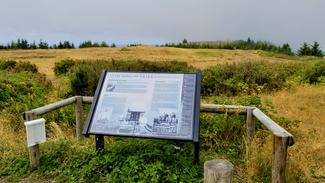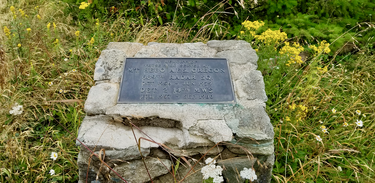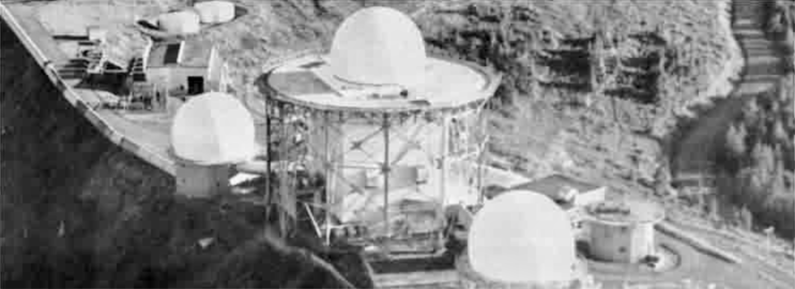Mount Hebo Air Force Station
|
Mount Hebo Air Force Station (1957-1979) - A Cold War Air Force Radar Station first established in 1957 on Mount Hebo, Tillamook County, Oregon. Named Mount Hebo Air Force Station after the location. Initially assigned a Permanent ID of M-100, later a Sage ID of Z-100. Partially abandoned in 1979 except for Detachment 2, 14th Missile Warning Squadron (MWS) who later abandoned the site in 1980. HistoryEstablished in 1956 and became operational on 16 Oct 1956 as Mount Hebo Air Force Station manned by the 689th AC&W Squadron. The station initially had both a Ground-Control Intercept (GCI) and early warning mission. The early warning mission involved tracking and identifying all aircraft entering their airspace while the GCI mission involved guiding Air Force interceptors to any identified enemy aircraft. Controllers at the station vectored fighter aircraft at the correct course and speed to intercept enemy aircraft using voice commands via ground-to-air radio. Initial equipment included the MPS-11 search radar, FPS-4 height-finder radar and an FPS-6 height-finder radar. SAGE System TransitionThe transition of the manual GCI system to the automated SAGE system began with the installation of the FST-2 coordinate data transmitter and search radar upgrades. The FST-2 equipment digitized the radar returns and transmitted the digital returns to the SAGE direction center. Under the SAGE System, interceptor aircraft were directed to their targets by the direction center computers and controllers, greatly reducing the need for local controllers and equipment at every radar station. The FST-2 was a very large digital system using vacuum tube technology. Over 6900 vacuum tubes were used in each FST-2 requiring 21 air-conditioned cabinets, 40 tons of air conditioning, 43.5 kva of prime power, and usually a large new addition to the operations building. The FST-2B modification added two more cabinets but with newer solid-state (transistor) technology to process coded responses from aircraft transponders. A 13 May 1959 Corvallis Gazette-Times newspaper article with a photo showing a physically installed FST-2 at Mount Hebo AFS with Air Force technicians and a Burroughs tech rep making system checks indicate that the FST-2 installation was probably completed in the summer of 1959. SAGE System Operation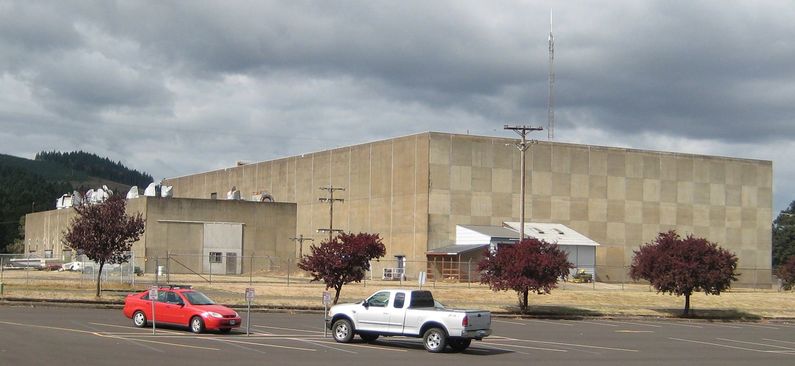
The site began operation as a SAGE site on 15 Jul 1960 initially feeding the Adair SAGE Direction Center DC-13. The search radar was upgraded to an FPS-24 and the height-finders were upgraded to an FPS-26A and an FPS-90. An early SAGE reorganization switched control from the Adair SAGE Direction Center DC-13 to the McChord SAGE Direction Center DC-12 on 1 Apr 1966. In the late 1960s, the FPS-26A height-finder radar was modified to become an FSS-7 SLBM detection radar. Early in the 1970s the FST-2 was replaced with an FYQ-47 solid-state coordinate data transmitter. After a spate of radome and other problems the FPS-24 search radar was replaced with a smaller FPS-27. ClosureThe public announcement that Mont Hebo AFS would close came in a Pentagon released a list of base closures in April 1978. Mount Hebo AFS and the 689th were deactivated on 30 Jun 1979. Detachment 2, 14th MWS continued to operate the FSS-7 until September 1980. Radome Problems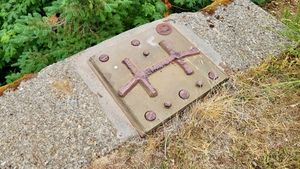 The massive FPS-24 radar antenna was a problem from the start. The rotating antenna was not normally meant to be enclosed in a radome but it was determined that the antenna needed to be enclosed because of fears that high winds and/or ice and snow at the top of Mount Hebo would damage the antenna itself. Enclosing the antenna in a rigid radome began on 30 Sep 1962 as the first of three attempts to enclose the FPS-24.
The decision was made to replace the FPS-24 radar with the much smaller FPS-27 radar from Miles City Air Force Station in Montana. The removal of the massive FPS-24 and the installation of the FPS-27 was completed on 30 Sep 1969. The same set of storms that destroyed the first FPS-24 radome also destroyed the inflatable radomes of the MPS-11 and FPS-6 on 12 Oct 1962 with winds of 170 mph. The third FPS-24 radome was also a rigid design but was a different type (CW-798), The radome panels in #3 were fastened to a rigid space frame. These panels were translucent unlike those in radomes #1 and #2 which were opaque. The panels in radome #3 also would flutter in the wind unlike the panels in Radomes #1 and #2. You could actually hear the panels flutter on the ground (at least 85 feet to 181 feet below). To reduce the flutter, which was causing the panel fiberglass material to break away from the rigid space frame, the manufacturer (ESSCO) installed a pressurization system inside the radome. All three FPS-24 radomes had to be installed on a Radome Support Structure (RSS) that was installed around the entire perimeter of the radar tower from the ground to the top. The RSS was needed because the base of the radomes was bigger around that the 64' x 64' space at the top of the radar tower. These radomes were also heavy and the roof which carried the 85.5-ton antenna could not support the added weight. After radome #3 collapsed the RSS was not removed. Both the Mt Hebo and Cottonwood AFS, ID FPS-24 radars had radomes and the RSS. The only Cottonwood radome installed remained in use until the station was closed. Presently (2017) the FPS-24 radar tower, less the RSS, remains at Cottonwood.
SLBM Detection OperationsIn July 1965, the Air Force selected Avco Corporation to modify seven FPS-26A height-finder radars to detect sea-launched ballistic missiles (SLBM)s. The FPS-26 was modified and redesignated the FSS-7 at the seven sites including Mount Hebo. The system became fully operational in 1971 after years of testing. Each of the FSS-7s was manned by a detachment of the 14th Missile Warning Squadron. Detachment 2 was located at Mount Hebo. The detachments operated somewhat independently from the radar squadrons and continued to operate the FSS-7 even after the radar squadron was inactivated. The Mount Hebo detachment was active between July 1967 and September 1980. Gap FillersMount Hebo AFS was responsible for the maintenance of two remote unattended gap-filler radar sites. The gap-filler sites were placed in locations where the main search radar lacked coverage. These sites sent digitized radar target data directly to a direction center. Maintenance teams were dispatched from Mount Hebo AFS for regularly scheduled maintenance or when fault indicators on the FSW-1 remote monitoring equipment suggested the site had problems. The Mount Hebo AFS gap-filler radars were located at Washougal, WA, and Philomath, OR. The Philomath site was located on the 4000' Mary's Peak. It was probably never fully operational and was deactivated after an ice storm dislodged the antenna sail. The site was shut down on 30 Apr 1960 and deactivated on 30 Jun 1961. The Washougal site was inactivated on 31 Mar 1961 and the antenna lowered. On 31 Aug 1963, a rigid radome was installed and the site was made operational. On 31 Dec 1963, it was connected to the SAGE system but it was then declared excess on 15 Apr 1964 and deactivated.
Physical Plant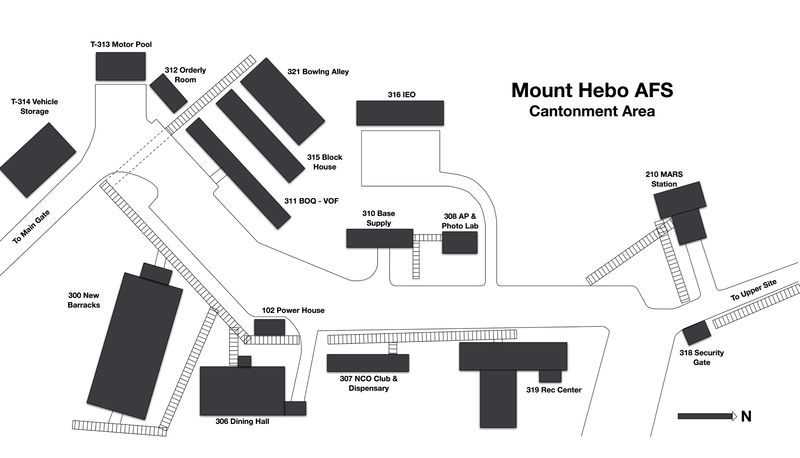 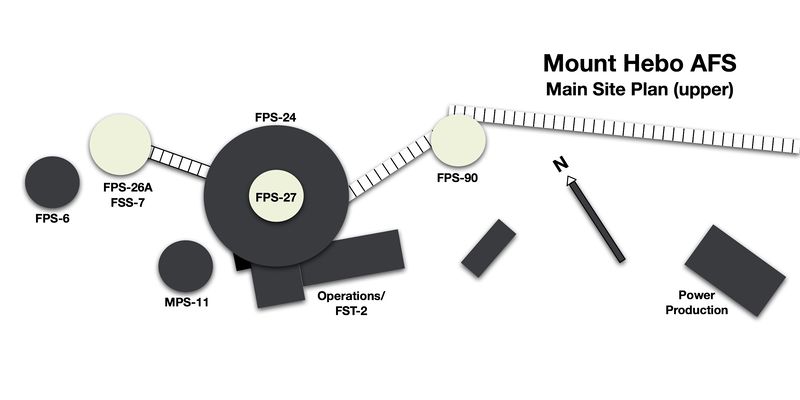 The physical plant of the site was divided into an upper main site, a cantonment area, a lower housing area and a radio site. The main site housed the operations buildings, the radar towers, and the backup generators. The cantonment area housed the enlisted barracks, the bachelor officer's quarters, the orderly room, the dining hall, the motor pool and other support buildings. At a lower level from the cantonment area was a small 27 unit housing area for married personnel. A separate radio site housed the radio equipment for directing aircraft intercepts. Like most early radar stations, Mount Hebo originally had a radio transmitter site and a separate radio receiver site used by local controllers for voice direction of fighter interceptors to their targets. With the SAGE System, the SAGE Direction centers had the primary task of directing intercepts and the local radio sites were reconfigured, usually into a single site that was known as the Ground to Air Transmitter Receiver (GATR) site. The GATR site communicated with the interceptors from either the local site or the SAGE direction center via voice commands and/or a digital data link. The Hebo GATR site was located several miles to the west of the main radar station near a location on the east side of Mt Hebo. The GATR side was connected to the main station for both communications and power. Water had to be trucked to the GATR site. A septic system was used. The GATR building and antenna field were removed when the station closed. In the winter, a Snow Cat was used when the road was covered with snow. The GATR crew had no living facilities. If they were stranded by bad weather, emergency food and clothing was available for a 72 hour period. Presently the remains of the covered cableway, that went between the station and GATR site alongside the road, is all that can still be seen. The cantonment area was initially constructed with Quonset hut style buildings anchored to the mountain and further lashed down with cables to prevent them from being carried off by the extreme winds experienced on Mount Hebo. Many of the buildings were connected by tunnels constructed with culvert-style metal tubes to enable the troops to move between buildings during high winds and/or deep snows without having to go outside. The barracks, as first constructed, were four long Quonset hut style buildings which proved unsuitable in a number of ways. On 1 Mar 1965 construction started on a modern 89 man barracks that was completed on 31 Dec 1965. The Ops/T-2 Bldg down by the radar towers also included the Communication Center and Telephone Switch. When the manual telephone system was in use through 1965 there was also a room for outside telephone plant telephone maintenance. When the automated phone system was installed in 1966, this room was used for storage and the Lincoln Tillamook Telephone Company did the maintenance.
Current Status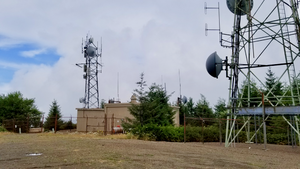 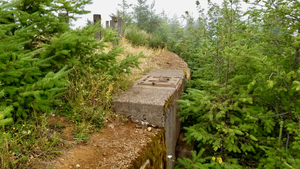 Abandoned, all sites leveled and returned to nature (almost) one remaining building. The USAF built paved road up to the cantonment area still exists and is in good condition suitable for travel by normal automobiles in the summer. At the cantonment area, there is a memorial plaque and an excellent reader board facing toward the upper operations area. A path leads from the reader board toward the main operations site. Several commercial communications sites are located on the site of the old cantonment area. The upper operations site has been cleared of all the buildings and most of the foundations. The only visible remains are a part of the retaining and support wall for the radome support structure on the right-hand side of the site. The housing area below the cantonment area has also been leveled and reforested. New tree growth covers much of the area and it is difficult to imagine that housing area once occupied the site. At the edge of former housing area is a trailhead and a parking lot for horse trailers.
See Also:
Sources:
Links:
Fortification ID:
Visited: 13 Aug 2017
| |||||||||||||||||||||||||||||||||||||||||||||||||||||||||||||||||||||||||||||||||||||||||||||||||||||||||||||||||||||||||||||||||||||||||||||||||||||||||||||||||||||||||||||||||||||||||||||||||||||||||||||||||||||||||||||||||||||||||||||||||||||||||||||||
